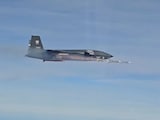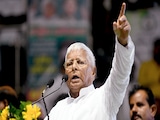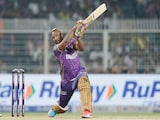On the night of May 7, Pakistan launched a massive provocation - unleashing 300-400 drones and missile-like systems across 36 locations along India's western border, from Ladakh to Kutch. Backed by heavy artillery shelling and armed drones across the Line of Control, the attack caused some Indian casualties and aimed to overwhelm Indian air defences.
India's response was swift and calibrated. The Armed Forces launched precision strikes using indigenous missile systems, AI-enabled surveillance drones, and smart munitions. Enemy air defence radars were destroyed, and significant losses were inflicted without crossing international airspace or escalating to full-scale conflict.
This firm and measured retaliation reflects India's growing defence sovereignty - a vision championed by Prime Minister Narendra Modi.
Defence sovereignty is vital for a nation's true independence. Until a country becomes self-reliant in meeting its defence needs, its sovereignty remains incomplete. Buying weapons and military equipment from abroad amounts to outsourcing national security and leaving it at the mercy of others. Recognizing this critical need, Prime Minister Narendra Modi's government took decisive steps to achieve self-reliance. Today, under his leadership, India's expanding defence industrial ecosystem is providing unprecedented strength to the nation, firmly securing its strategic interests.
One of the major milestones in indigenous defence capability is Akashteer, an advanced Air Defence Control and Reporting System (ADCRS) developed by Bharat Electronics Limited (BEL) for the Indian Army. Akashteer is a fully automated, integrated air defence system that significantly enhances India's vigilance and air defence technology. It represents the new era of self-developed, sophisticated military infrastructure.
In another defining moment, India commissioned its first Indigenous Aircraft Carrier (IAC-1) into the Navy as INS Vikrant in 2022. Designed and constructed entirely within India, INS Vikrant strengthens India's standing as a 'Blue Water Navy' - a maritime force capable of operating globally. With a displacement of 43,000 tonnes when fully loaded, INS Vikrant joins the elite group of nations - the United States, Russia, France, the United Kingdom, and China - that have the capacity to design and build their own aircraft carriers. INS Vikrant now stands as the seventh-largest carrier or carrier class in the world, showcasing India's shipbuilding prowess.
Strategic international collaborations have also played a key role in strengthening India's security architecture under PM Modi. Despite tremendous external pressures, especially from the United States, India secured the purchase of the Russian S-400 air defence system under a $5 billion deal. The US had strongly discouraged India from proceeding with the acquisition, even threatening sanctions under the previous Trump administration and continuing its pressure under the Biden administration. However, standing firm against all odds, the Modi government ensured that India's strategic interests came first.
Similarly, the induction of 36 Rafale fighter jets from France since 2020 significantly enhanced India's air capabilities. Fitted with SCALP missiles, the Rafale jets have given India a decisive edge over Pakistan's US-made F-16 fighters. Reports suggest that India used Rafale jets armed with SCALP missiles to strike terrorist infrastructure nearly 100 km deep inside Pakistan without crossing the border, highlighting the jets' superior long-range strike capabilities.
The success of indigenous production and strategic procurement is evident in the numbers. Today, 60% of India's arms and ammunition are domestically produced, a substantial increase compared to a decade ago. Major corporate entities like the Adani Group, Tata Group, and Larsen & Toubro (L&T) are actively manufacturing radar systems, artillery, and other advanced defence equipment within India, giving a major boost to self-reliance.
Even though India's arms requirements have grown, a recent report by the Swedish think tank SIPRI noted only a 4.7% increase in India's arms imports between 2014-2018 and 2019-2023, indicating a relative reduction in reliance on foreign arms as indigenous capabilities rise.
According to a Nomura report titled "India Defence", India's defence sector presents a massive ordering opportunity of nearly USD 138 billion from FY24 to FY32. India's defence capital expenditure is projected to reach 37% of the total budget by FY30, signalling enormous growth opportunities for companies in defence production and technological advancement.
This optimism is already reflected in the stock market. Shares of Hindustan Aeronautics Limited (HAL) and Bharat Electronics Limited (BEL) have soared. HAL's share price has surged to Rs 4500, while BEL's has risen to Rs 316, reflecting over 1400% growth in the past five years. These figures show growing investor confidence in India's indigenous defence manufacturing, bolstered by supportive government policies under PM Modi.
Austrian combat aviation analyst and noted air warfare expert Tom Cooper described India's response to Pakistan's aggression after Operation Sindoor as a "clear-cut victory." Writing on Facebook, Cooper attributed India's success to its superior firepower and advanced multi-layered air defence systems. He suggested that Pakistan's call for a ceasefire was a direct result of being outmatched by India's military capabilities. In his post, Cooper lauded India's decisive retaliation, underscoring its dominance in the conflict.
Under PM Modi's leadership, India's defence production reached Rs 1.27 lakh crore in FY 2023-24, a 174% rise since 2014-15, fueled by the "Make in India" initiative. Defence exports also touched a record Rs 21,083 crore, growing 30 times over the past decade and reaching over 100 countries.
Today, India's armed forces are stronger, smarter, and more self-reliant than ever before. With indigenous defence capabilities rising and strategic partnerships deepening, Prime Minister Narendra Modi has truly redefined India's strategic autonomy and military strength for the 21st century.
(The author is national spokesperson, Bharatiya Janata Party)
Disclaimer: These are the personal opinions of the author















